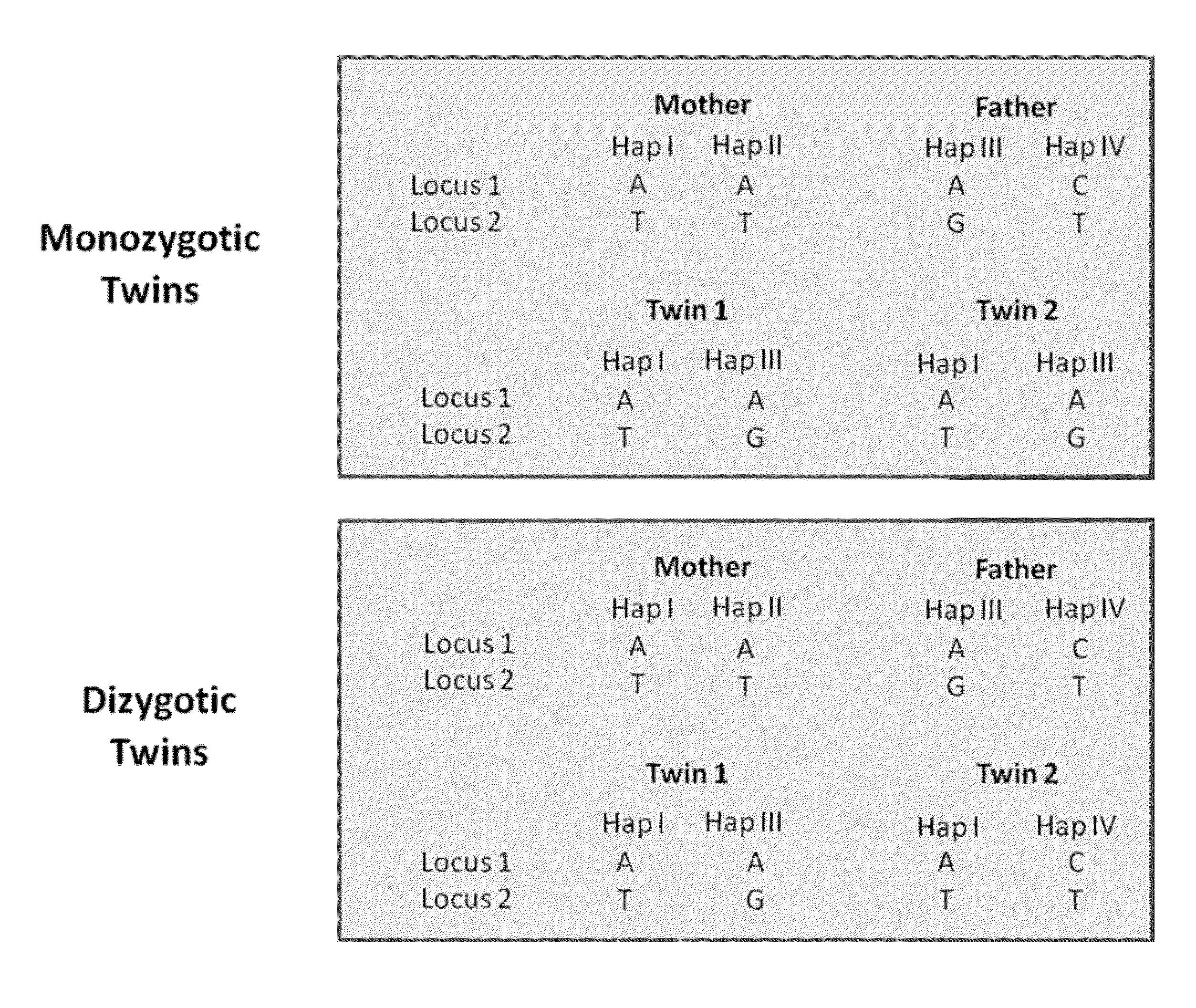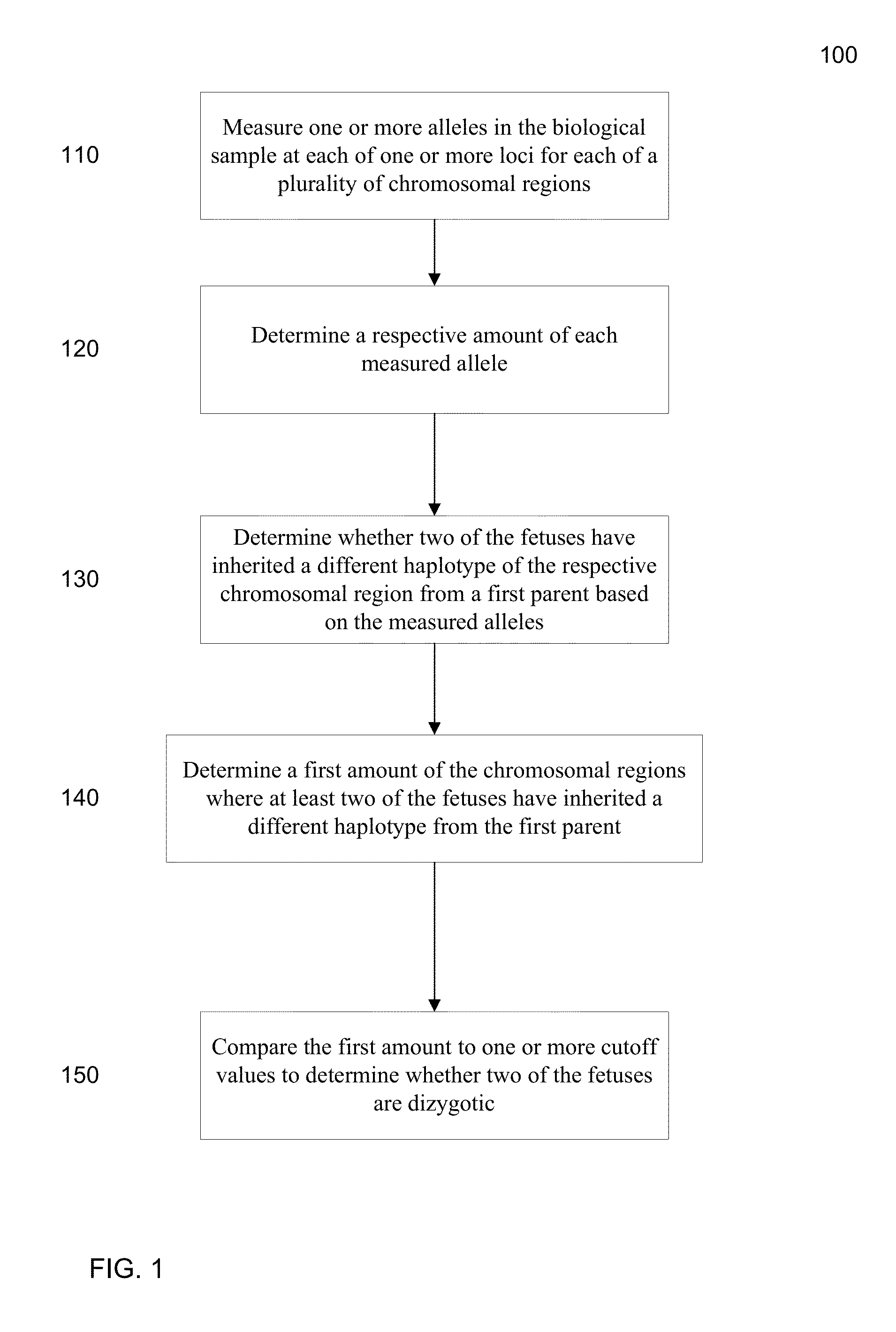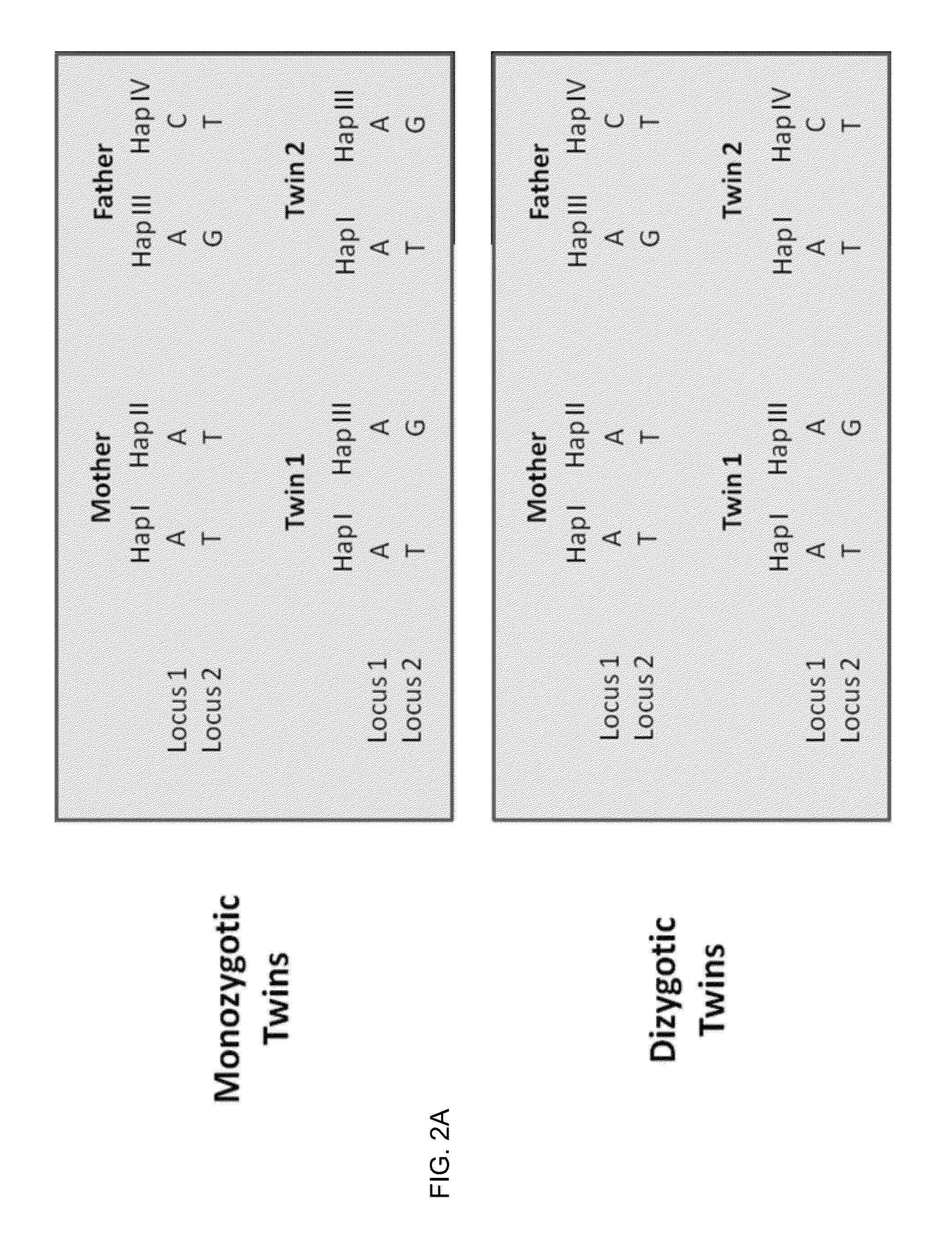Molecular testing of multiple pregnancies
a technology of multiple pregnancies and molecular testing, which is applied in the direction of library screening, library member identification, instruments, etc., can solve the problems of harm to the fetus and/or mother, inaccurate or limited ultrasonic scanning,
- Summary
- Abstract
- Description
- Claims
- Application Information
AI Technical Summary
Benefits of technology
Problems solved by technology
Method used
Image
Examples
Embodiment Construction
[0048]Fetal DNA has been shown to be present in the plasma and serum of pregnant women (Lo et al. Lancet 1997; 350: 485-487; and U.S. Pat. No. 6,258,540). The analysis of fetal DNA in maternal plasma or serum has the advantages that it is relatively noninvasive, requiring just a sample of the mother's blood. Compared with conventional noninvasive methods for prenatal screening, e.g., ultrasound scanning, testing of fetal DNA in maternal plasma or serum would allow the direct assessment of the fetal genetic information. Here, we illustrate the principle of how DNA in maternal plasma or serum (or other biological sample) can be analyzed to differentiate if a pregnant woman is carrying monozygotic or dizygotic fetuses (e.g. a pair of monozygotic or dizygotic twins).
[0049]First, an analysis across multiple chromosomal regions to determine a level of difference between the fetal genomes, which is used to perform a classification regarding the zygosity of the fetuses. Next, we discuss spe...
PUM
| Property | Measurement | Unit |
|---|---|---|
| Fraction | aaaaa | aaaaa |
| Concentration | aaaaa | aaaaa |
| Mixture | aaaaa | aaaaa |
Abstract
Description
Claims
Application Information
 Login to View More
Login to View More - R&D
- Intellectual Property
- Life Sciences
- Materials
- Tech Scout
- Unparalleled Data Quality
- Higher Quality Content
- 60% Fewer Hallucinations
Browse by: Latest US Patents, China's latest patents, Technical Efficacy Thesaurus, Application Domain, Technology Topic, Popular Technical Reports.
© 2025 PatSnap. All rights reserved.Legal|Privacy policy|Modern Slavery Act Transparency Statement|Sitemap|About US| Contact US: help@patsnap.com



